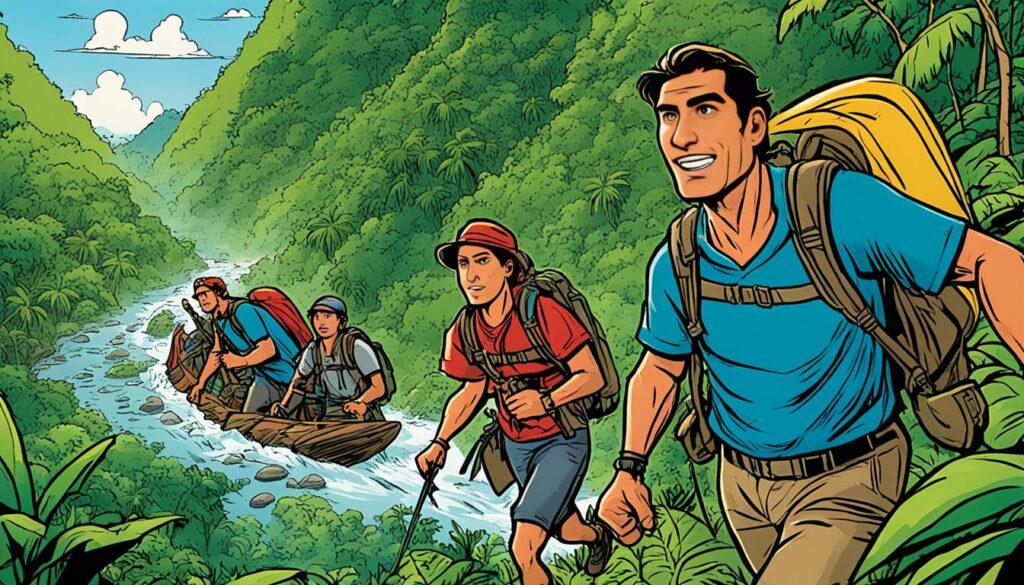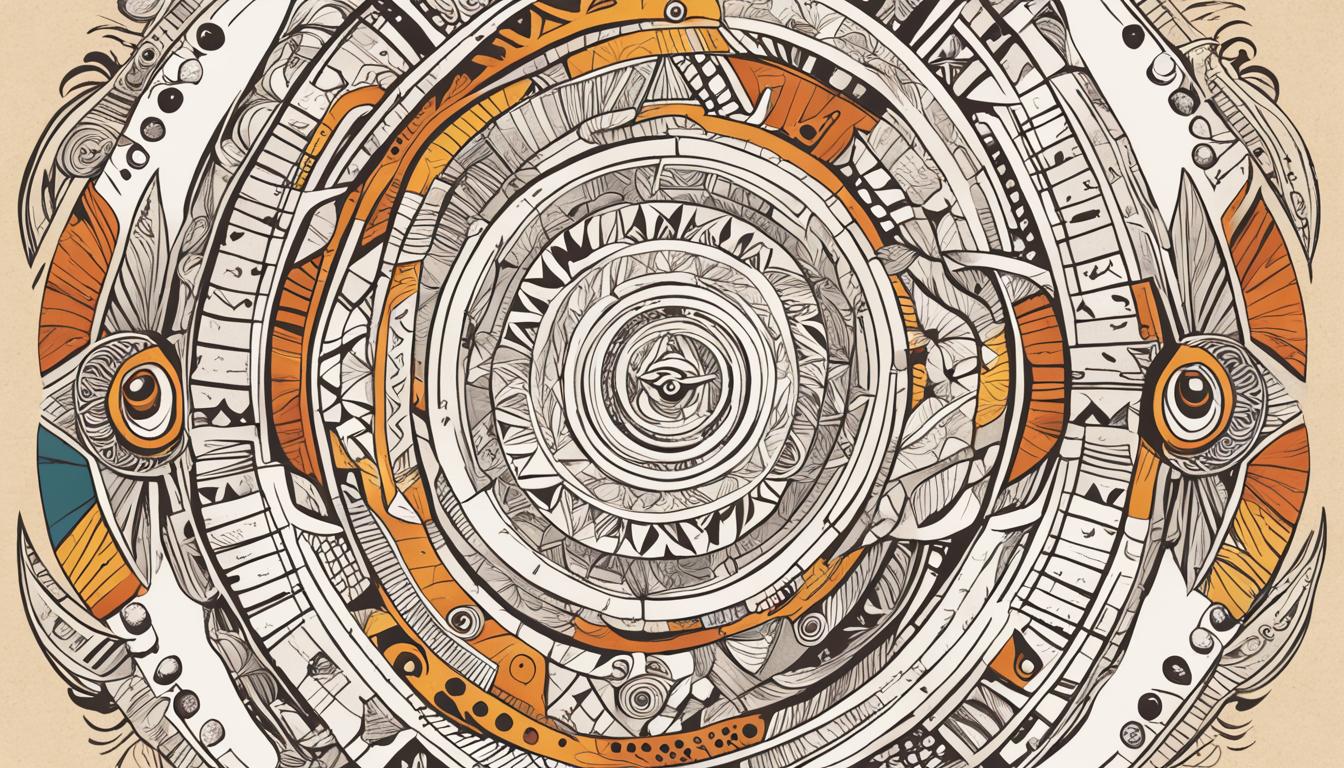Did you know that the Kayabí language, a vital indigenous language of Brazil, is currently endangered? Despite its rich linguistic heritage and cultural significance, the Kayabí language is facing the threat of extinction. With only approximately 1,000 native speakers as of 2006, urgent measures are being taken to preserve and revitalize this endangered language.
The Kayabí language, also known as Kawaiwete, is spoken by the Kayabí people in the northern state of Mato Grosso, Brazil. It belongs to the Tupi-Guarani language family and has a distinct phonology, consisting of various consonant and vowel sounds unique to this indigenous language.
The endangered status of the Kayabí language highlights the importance of linguistic diversity and the need for linguistic preservation and revitalization efforts. By safeguarding the Kayabí language, we can protect the indigenous culture and heritage that it represents.
The Kayabí People of Brazil
The Kayabí, also known as Kaiabi, are an indigenous people residing in the northern state of Mato Grosso, Brazil. With a population of approximately 1,300 individuals, the Kayabí primarily inhabit the Xingu Indigenous Park and the Indian Reservation of Apiaká-Kayabi. Despite the challenges they have faced, including conflicts caused by the invasion of their lands by rubber companies and colonization efforts, the Kayabí have maintained their traditional way of life and actively engage in cultural preservation and indigenous movements.
The Kayabí people have a deep connection to their ancestral lands and are dedicated to preserving their cultural practices and traditions. Their resilience is evident as they continue to uphold their cultural identity in the face of adversity. Around 200 Kayabí individuals still live in their traditional homelands outside of the Xingu Reserve, showcasing their unwavering commitment to their heritage.
The Xingu Indigenous Park and the Apiaká-Kayabi Indigenous Territory are crucial spaces of cultural preservation for the Kayabí and other indigenous groups. These protected areas offer sanctuary, allowing the Kayabí people to nurture their cultural practices, language, and traditional knowledge.
By valuing and supporting the Kayabí people’s efforts in cultural preservation, we can contribute to the protection of indigenous cultures, the preservation of linguistic diversity, and the celebration of the Kayabí people’s rich heritage.
History and Migration of the Kayabí People
The history of the Kayabí people is a testament to their resilience and unwavering resistance against colonization. Their story is marked by a deep connection to their lands, a rich cultural heritage, and a determination to protect their way of life.
In the 19th century, rubber companies encroached upon the Kayabí territory, leading to conflicts and forced labor. The Kayabí people fiercely resisted these invasions, fighting to preserve their lands, traditions, and autonomy.
To escape persecution and secure their future, the Kayabí started migrating to the Xingu Indigenous Park in the 1950s. This migration continued over the following decades, with different groups of Kayabí people relocating to the park from various regions.
Despite the challenges and divisions caused by these migrations, the Kayabí have managed to maintain a strong sense of identity and cultural preservation. Their unwavering commitment to their heritage has allowed them to thrive within the Xingu Indigenous Park, where they have been able to reconnect with their ancestral lands and traditions.
The history of the Kayabí people is a testament to their resilience and unwavering resistance against colonization.
Today, the Kayabí people continue to assert their rights to the land and resources they depend on for survival. They actively participate in indigenous movements, advocating for the recognition and protection of their rights as well as the rights of other indigenous communities in Brazil.
Their migration to the Xingu Indigenous Park has provided them with a safe haven and a platform to assert their sovereignty and preserve their cultural practices. This vibrant community is deeply rooted in their traditions, drawing strength from their history of resistance and their ongoing commitment to indigenous values.

The Kayabí Migration to Xingu Indigenous Park
| Time Period | Migration Details |
|---|---|
| 1950s | The Kayabí people started migrating to the Xingu Indigenous Park to escape persecution and encroachment on their lands. |
| 1960s-1980s | More groups of Kayabí people followed suit and relocated to the park, seeking a safe and secure environment to preserve their culture. |
| 1990s-Present | Migration and settlement of Kayabí communities within the Xingu Indigenous Park have continued, with different groups joining the already established community. |
The Kayabí Language and Culture
The Kayabí people have a rich cultural heritage that is intricately woven with their language. The Kayabí language, belonging to the Tupi-Guarani language family, is a key component of their cultural identity. As speakers of this indigenous language, the Kayabí are custodians of a linguistic heritage that holds immense value.
With linguistic diversity being increasingly recognized as an important aspect of our global heritage, the preservation and revitalization of the Kayabí language take on added significance. The Kayabí people’s unique cultural practices and traditional knowledge are deeply embedded in their language, making it a vital link to their ancestral wisdom.
“Our language is a vessel that holds the collective knowledge and wisdom of our elders. It is through the Kayabí language that we pass down our cultural values and connect with our ancestors,” says Chief Aritana Yawalapiti.
The Kayabí have a profound connection to their lands and practice a diversified agriculture that reflects their deep cultural knowledge. Their traditional practices and customs are intrinsic to their way of life and serve as a means of preserving their cultural values. By maintaining and passing down these traditions through generations, the Kayabí ensure the continuity of their cultural heritage.
At the core of Kayabí culture is a complex cosmology that emphasizes the interconnectedness of all living beings and the environment. They believe in the importance of maintaining harmony with the natural world, a belief system that stems from their deep understanding of their surroundings and their cultural values.
| Cultural Practices | Traditional Knowledge | Cultural Values |
|---|---|---|
| 1. Diversified agriculture | 1. Ancestral wisdom | 1. Harmony with nature |
| 2. Rituals and ceremonies | 2. Medicinal plants | 2. Respect for ancestors |
| 3. Art and craftsmanship | 3. Indigenous technology | 3. Community cohesion |
The Kayabí people’s commitment to preserving their language and culture is a testament to the significance they place on their linguistic diversity. Through their efforts, they are not only safeguarding their cultural heritage but also contributing to the greater cause of maintaining linguistic diversity worldwide.
Conclusion
The Kayabí language stands as a vital cornerstone of Brazil’s indigenous culture and linguistic heritage. However, it is currently classified as an endangered language, necessitating urgent measures to ensure its preservation and revitalization. Despite facing numerous challenges and threats to their lands and way of life, the Kayabí people have demonstrated remarkable resilience and unwavering commitment to safeguarding their cultural practices and traditions.
The establishment of the Xingu Indigenous Park has been instrumental in providing a sanctuary for the Kayabí and other indigenous groups, enabling them to continue practicing their cultural traditions and preserving their unique linguistic diversity. By acknowledging and supporting the significance of the Kayabí language and culture, we can contribute to the broader efforts aimed at protecting indigenous languages and fostering the richness of linguistic diversity in Brazil.
Cultural preservation plays a pivotal role in maintaining the fabric of societies, and the endangered status of the Kayabí language underscores the urgent need for collective action. Sustained efforts must be made to document and teach the Kayabí language, ensuring its transmission to future generations. Additionally, fostering intergenerational dialogue and promoting language revitalization initiatives are essential steps towards safeguarding the Kayabí people’s cultural heritage.
Preserving the Kayabí language is not merely an act of linguistic conservation; it is also an act of profound respect for the indigenous culture and the invaluable contributions it brings to the world. By joining forces with the Kayabí people in their endeavor to protect their language, we can help fortify the foundations of cultural diversity and ensure the continuity of their vibrant heritage for generations to come.
FAQ
What is the Kayabí language?
The Kayabí language, also known as Kawaiwete, is a Tupian language spoken by the Kayabí people in the northern state of Mato Grosso, Brazil.
How many native speakers does the Kayabí language have?
As of 2006, the Kayabí language had approximately 1,000 native speakers.
Is the Kayabí language endangered?
Yes, the Kayabí language is endangered.
Where is the Kayabí language spoken?
The Kayabí language is spoken in the Xingu Indigenous Park and the Apiaká-Kayabi Indigenous Territory.
What efforts are being made to preserve and revitalize the Kayabí language?
Efforts are being made to preserve and revitalize the Kayabí language to ensure its cultural and linguistic heritage is protected.
Who are the Kayabí people?
The Kayabí, also known as Kaiabi, are an indigenous people inhabiting the northern state of Mato Grosso in Brazil.
Where do the Kayabí people primarily reside?
The Kayabí people primarily reside in the Xingu Indigenous Park and the Indian Reservation of Apiaká-Kayabi.
How many Kayabí people are there?
The Kayabí population is approximately 1,300 people, with around 200 still living in their traditional homelands outside of the Xingu Reserve.
What challenges have the Kayabí people faced?
The Kayabí people have faced challenges and conflicts due to the invasion of their lands by rubber companies and colonization efforts.
What is the history of the Kayabí people?
The history of the Kayabí people is marked by resistance and the fight to protect their lands and culture against colonization efforts.
What is the significance of the Kayabí language to the culture?
The Kayabí language is an integral part of the Kayabí culture, representing their unique linguistic heritage and cultural practices.
How do the Kayabí people preserve their cultural practices?
The Kayabí people rely on their traditional practices and customs, preserving their cultural values and passing them down through generations.
What is the significance of the Xingu Indigenous Park for the Kayabí people?
The Xingu Indigenous Park has provided a sanctuary for the Kayabí and other indigenous groups, allowing them to continue their cultural practices and maintain their unique linguistic diversity.
